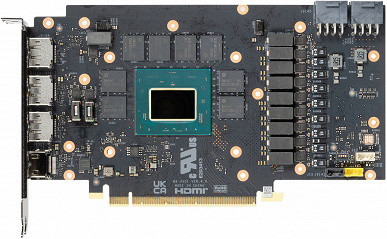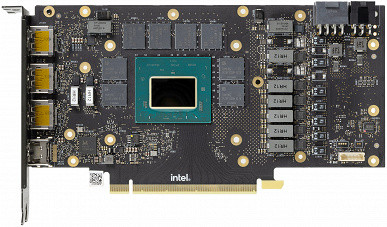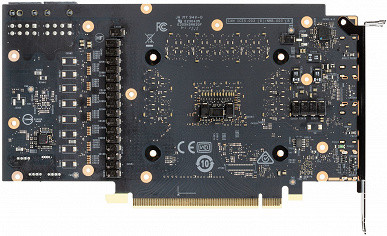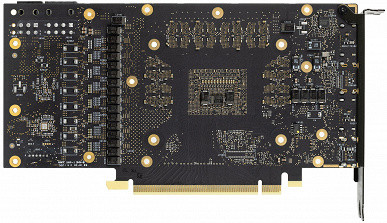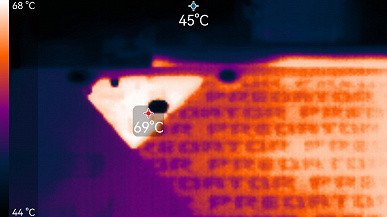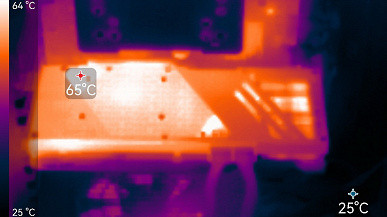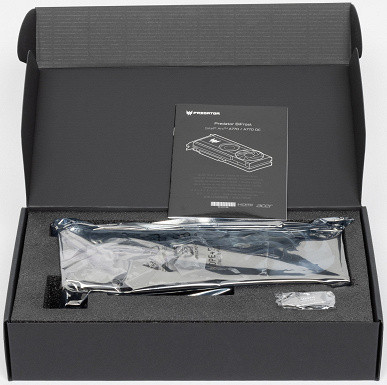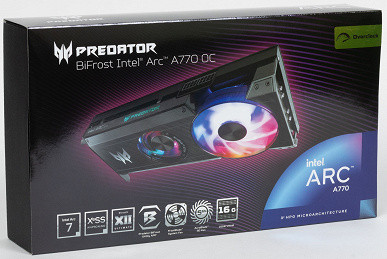Briefly about the main thing
The situation with the availability of video cards based on Intel processors on the market remains unchanged: the “blue” manufacturer still has few partners producing such products. This is despite the fact that in the motherboard space, all major manufacturers are tied to Intel chipsets. The company apparently does not use blackmail or pressure on its partners, unlike some competitors, such as Nvidia.

News that Nvidia was banning the production of graphics cards based on Intel GPUs leaked to the public, causing controversy. Nvidia threatened to revoke discounts on GeForce series processors and authorized partnership status. Because of this, only MSI and Gigabyte to some extent continue to produce cards based on the Intel Arc A310/380, without directly competing with current Nvidia solutions.
Manufacturers not associated with GeForce products can safely release video cards based on Arc GPUs, as well as AMD Radeon GPUs, since AMD does not put such pressure on its partners. Among such manufacturers, ASRock stands out. In 2022, the Chinese company Gunnir, which produces exclusively video cards based on “blue” chips, became Intel’s flagship partner.
Taiwanese company Acer, known for its desktop PCs and laptops, has also entered the discrete graphics card market, including models based on Intel Arc. Having started by releasing cards for its own PCs, Acer later decided to offer them on the retail market. In addition, Acer also introduced AMD Radeon-based graphics cards, highlighting their multi-faceted graphics strategy.
Games without ray tracing (classic rasterization):

The Arc A770 delivers fast gaming performance without ray tracing. In Full HD (1080p) resolution, fairly high graphics settings provide a comfortable gaming experience. Even at 2.5K (1440p) you can expect relatively good frame rates, and some games with simple graphics achieve decent performance even at 4K. However, these results require relatively modern platforms that support Resizable Bar, such as Intel 500 and AMD 500 and newer chipsets.
On older platforms, FPS drops of up to 15%-20% are possible, especially in older games developed for DirectX 9/10. Intel programmers initially optimized the drivers for modern games that support DX12 and Vulkan, but compatibility and performance issues in older games are gradually being resolved with the release of new driver versions.
Games using ray tracing and DLSS/FSR/XeSS:
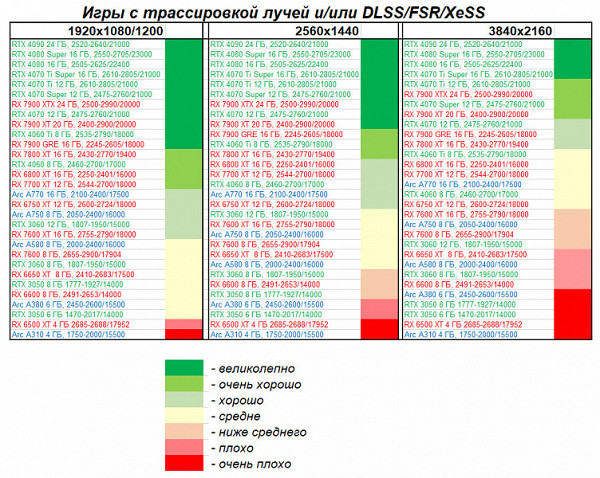
Using ray tracing usually reduces performance, but modern games include dynamic scaling technologies such as Nvidia DLSS, AMD FSR, and Intel XeSS that compensate for this performance hit. Unlike Nvidia DLSS, AMD FSR and Intel XeSS are less efficient on Intel Arc family graphics cards. However, when using ray tracing (together with FSR/XeSS), the Arc A770 provides comfortable gaming at high graphics settings in Full HD (1080p) and even at 2.5K.
Card characteristics
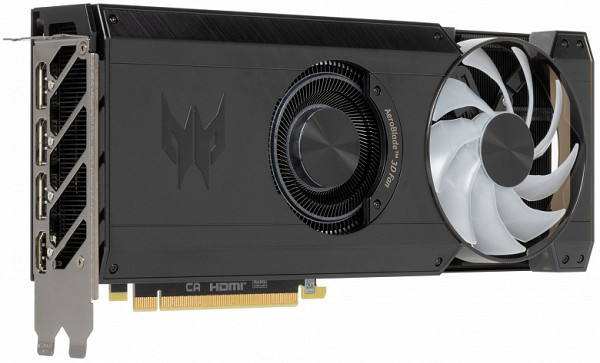

Acer was founded in 1976 under the name Multitech International and was engaged in the production of electronic games. In 1981, it changed its name to Acer, which is Latin for “sharp” or “maple” (the exact meaning of the term chosen by the founders is unknown). Beginning in the early 1980s, the company began building PCs for OEM orders, and in 1985, it beat IBM to the punch by releasing the first 32-bit PC. In the 1990s, Acer focused its production on its own brand, introducing Acer-branded PCs. Most of the components for these PCs were produced in Taiwanese factories according to the company's orders. In the early 2000s, Acer acquired a number of well-known American PC manufacturers such as Gateway and Packard Bell, which allowed it to expand production capacity and distribution channels. In subsequent years, Acer has aggressively acquired both hardware and software companies, significantly expanding its product portfolio to include laptops, server solutions, cloud services and other products. Today, Acer develops and markets a wide range of products, including PCs, laptops, monitors, projectors, gaming accessories and peripherals. It remains a factoryless company, using contract manufacturers to produce its products. The number of employees worldwide exceeds 7,000.
| Acer Predator Bifrost Intel Arc A770 OC 16GB 256-bit GDDR6 | ||
|---|---|---|
| Parameter | Meaning | Nominal value (reference) |
| GPU | Arc A770 (ACM-G10) | |
| Interface | PCI Express x16 4.0 | |
| GPU operating frequency (ROPs), MHz (default/turbo modes) | 2200(Boost)—2400(Max) / 2200(Boost)—2451(Max) | 2100(Boost)—2400(Max) |
| Memory operating frequency (physical (effective)), MHz | 2186 (17500) | 2186 (17500) |
| Memory bus width, bits | 256 | |
| Number of computational units in the GPU | 32 | |
| Number of operations (ALU/CUDA) in block | 128 | |
| Total number of ALU/CUDA blocks | 4096 | |
| Number of texture units (BLF/TLF/ANIS) | 256 | |
| Number of Raster Operation Blocks (ROP) | 128 | |
| Number of Ray Tracing blocks | 32 | |
| Number of matrix/tensor blocks | 512 | |
| Dimensions, mm | 270×120×40 | 265×100×38 |
| The number of slots in the system unit occupied by the video card | 2 | 2 |
| PCB color | black | black |
| Peak power consumption in 3D, W | 173 | 190 |
| Power consumption in 2D mode, W | 20 | 20 |
| Power consumption in sleep mode, W | 6 | 6 |
| Noise level in 3D (maximum load), dBA | 34.0 | 26.4 |
| Noise level in 2D (video viewing), dBA | 26.0 | 18.0 |
| Noise level in 2D (idle), dBA | 26.0 | 18.0 |
| Video outputs | 1×HDMI 2.1, 3×DisplayPort 2.0 | 1×HDMI 2.1, 3×DisplayPort 2.0 |
| Multiprocessing support | No | |
| Maximum number of receivers/monitors for simultaneous image output | 4 | 4 |
| Power: 8-pin connectors | 2 | 1 |
| Power: 6-pin connectors | 0 | 1 |
| Power: 16-pin connectors | 0 | 0 |
| Weight of the card with the delivery set (gross), kg | 1.5 | 2.0 |
| Card weight (net), kg | 1.15 | 1.2 |
| Max Resolution/Frequency, DisplayPort | 3840×2160@144Hz, 7680×4320@60Hz | |
| Maximum resolution/frequency, HDMI | 3840×2160@144Hz, 7680×4320@60Hz |
Memory

The card is equipped with 16 GB of GDDR6 SDRAM memory, located on the front side of the PCB in the form of 8 chips of 16 Gbit each. Samsung memory chips (K4Z80325BC-HC18) are designed to operate at a nominal frequency of up to 2250 MHz (equivalent to 18000 MHz effective frequency).
Card features and comparison with Intel Arc A770 Limited Edition (16 GB)
It is obvious that Acer engineers used the reference PCB from Intel, making only minor changes to attach the cooling system and adjust the number of power phases.
The kernel is marked in encrypted form.
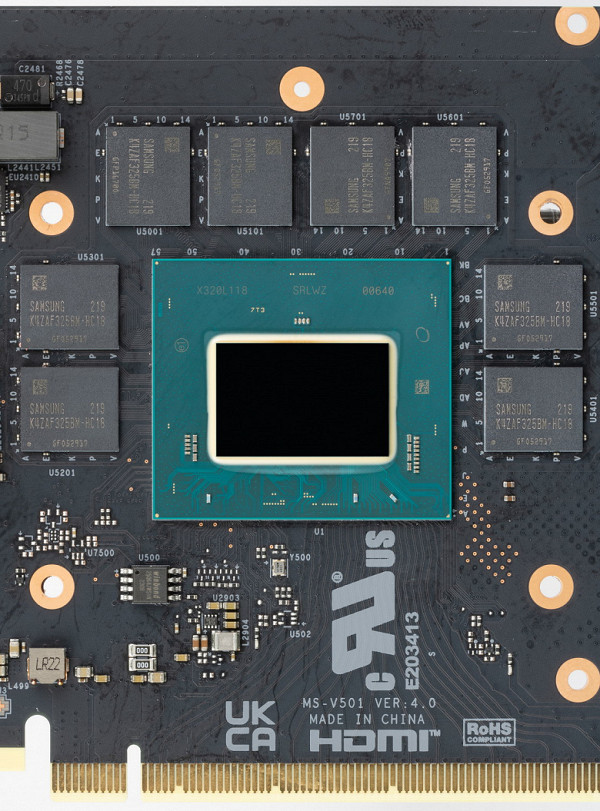
The total number of power phases on the Acer card is 12, and the phase distribution is as follows: 9 phases per core and 3 per memory chips.
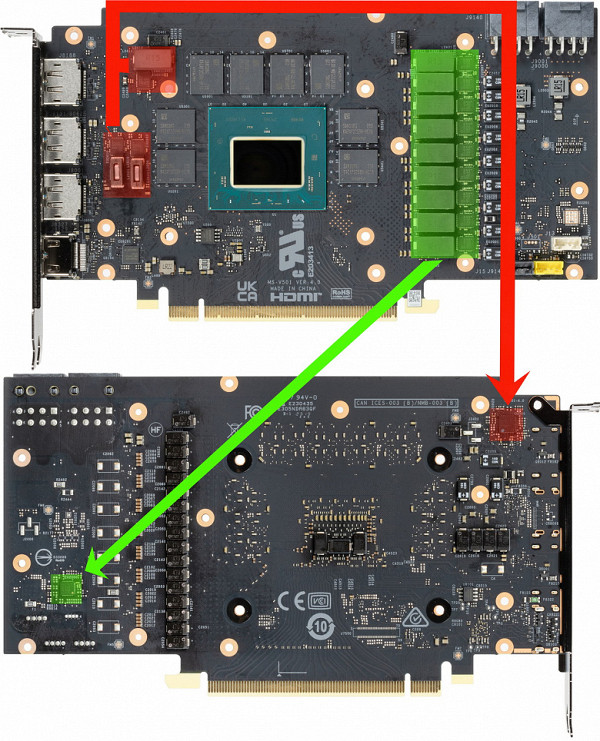
The core power supply is marked in green, and the memory in red. All controllers are located on the back of the board. The core power is controlled by a MP2975 10-phase PWM controller from Monolithic Power Systems.
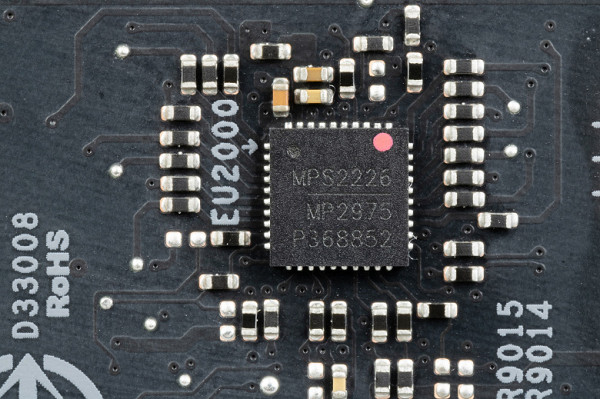
The 4-phase power supply circuit for the memory chips is managed by another PWM controller from the same company.
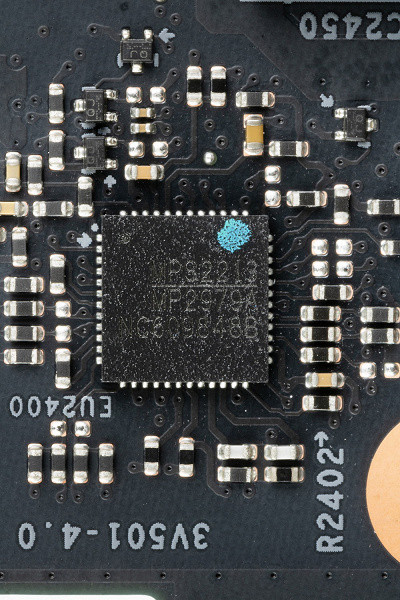
The core and memory power converter uses DrMOS transistor assemblies — MP87992 (Monolithic Power Systems), each of which is rated for a maximum of 70 A.
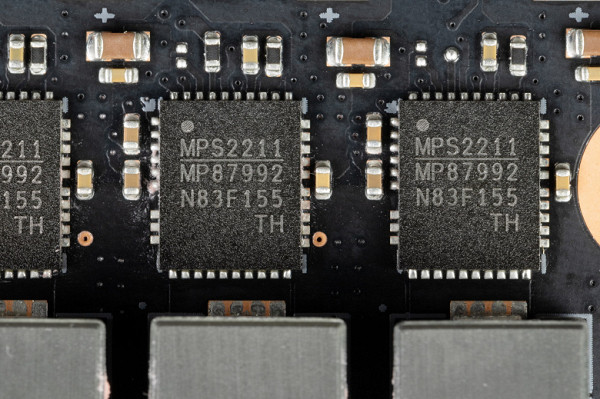
There is no separate controller for monitoring the card; this functionality is implemented directly in the GPU.
It should be noted that the card has standard dimensions: the thickness is 40 mm, which makes it a dual-slot card in the system unit.

The card is equipped with a standard set of video outputs: three DP (2.0) and one HDMI (2.1).
It is worth noting that HDMI 2.1 is implemented not directly, but via DisplayPort 2.0, for which a Synaptics signal controller is used.
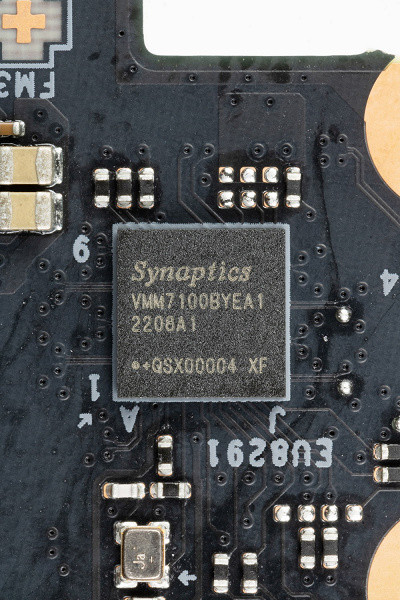
The standard memory frequencies correspond to the reference values, and the core Boost frequency is slightly higher than the standard one. However, using Acer's proprietary program, you can enable the preset Turbo mode, in which the maximum core frequency increases by several percent.
I also tried overclocking the video card using the settings panel in the Intel drivers (where, like the Acer program, you can increase the frequency only for the GPU). As a result, it was possible to achieve stable core operation at frequencies up to 2602 MHz, which provided an average performance increase of 6%. Let us recall that the performance of Intel video cards significantly depends on the inclusion of Resizable BAR in the BIOS Setup of the motherboard, since this technology provides direct processor access to video memory.
The power consumption of the Acer card in tests reached 171 W (173 W in Turbo mode). The card is powered via two 8-pin PCIe 2.0 connectors.

The card's operation is controlled using a proprietary utility included in the Intel software package.
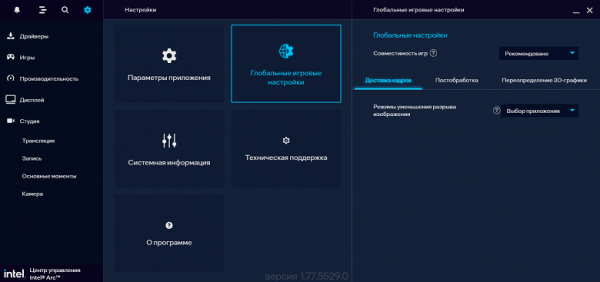
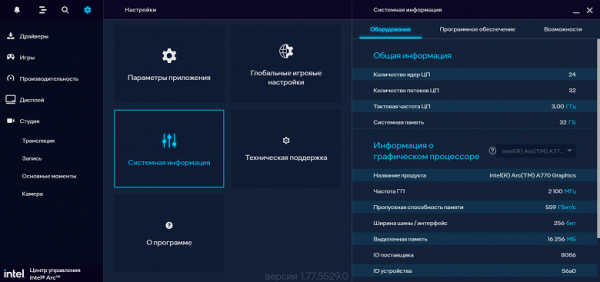
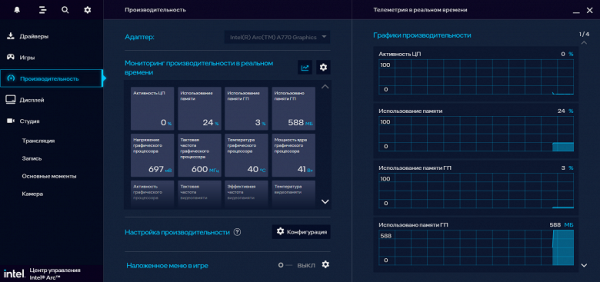

Acer also provides its own Predator Bifrost utility for managing the graphics card. The program allows you to choose one of three preset modes: silent, default and turbo mode. The differences between the modes are small changes in core frequencies and fan operating curves.

Default mode

Turbo mode — maximum GPU frequency up to 2451 MHz
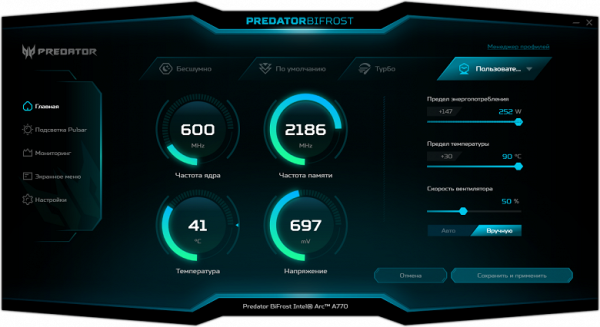
Manual settings panel

Dashboard

OSD (overlay information) settings panel
Actually, the value of this program lies only in the presence of preset operating modes and control of the card backlight. Everything else can be configured by Intel software.
Heating and cooling
The cooling system here is based not on a single massive radiator, but on two.
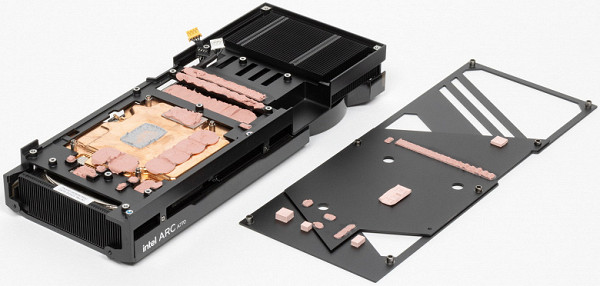
This is what the cooler looks like with the fan casing removed. The core and memory chips are cooled (via a disposable thermal interface) by a massive copper heat sink, under which there is an evaporation chamber. 6 heat pipes are soldered to it on the reverse side: 4 of them remove heat to a plate radiator (pictured on the right), cooled by a large 100 mm axial fan, and the other 2 are soldered to a second radiator with large longitudinal fins (pictured on the left). The second radiator is cooled by a centrifugal fan located in the center of the video card.
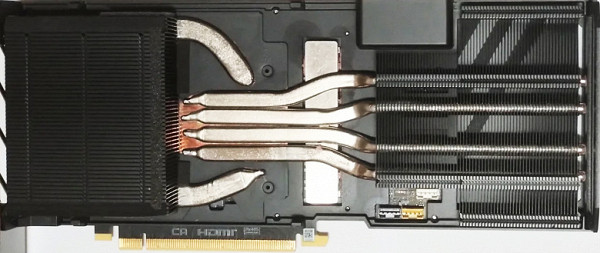
To cool the VRM power converters, their own heat sinks are installed, located on a massive black frame that unites the entire structure.
Thus, the cooling system has two fans with different operating principles. The central centrifugal fan drives air through the radiator, located almost above the graphics core, and removes the heated air outside the system unit through the slots in the video card mounting bracket. At the same time, a conventional 100 mm axial fan cools a conventionally designed radiator, penetrated by heat pipes. The air is blown through the radiator and remains inside the PC case.
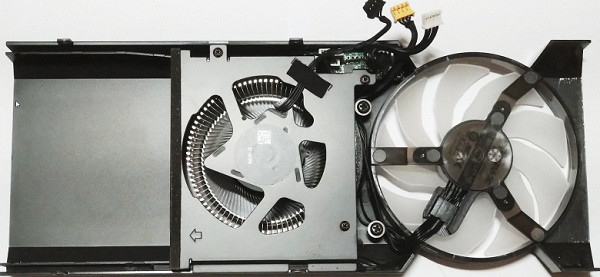
All this is reminiscent of the principle of operation of the coolers in the Founders Edition reference cards of the GeForce RTX 30/40 generation from Nvidia, however, both Nvidia fans have the same operating principle.
The backplate not only serves to protect the PCB, but also helps cool the back of the PCB as part of the overall design concept.
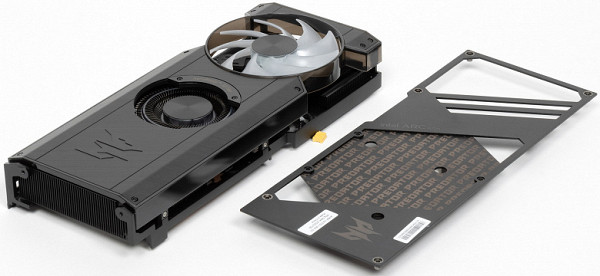
The design of the cooling system seems unreasonably complex and quite expensive, so it is especially interesting to evaluate its effectiveness. It is important to note that the card with a cooler occupies only 2 slots (40 mm) in thickness.
Unfortunately, at low load the fans do not stop and continue to spin (although in idle mode their speed is low, about 1200 rpm).
Temperature monitoring:
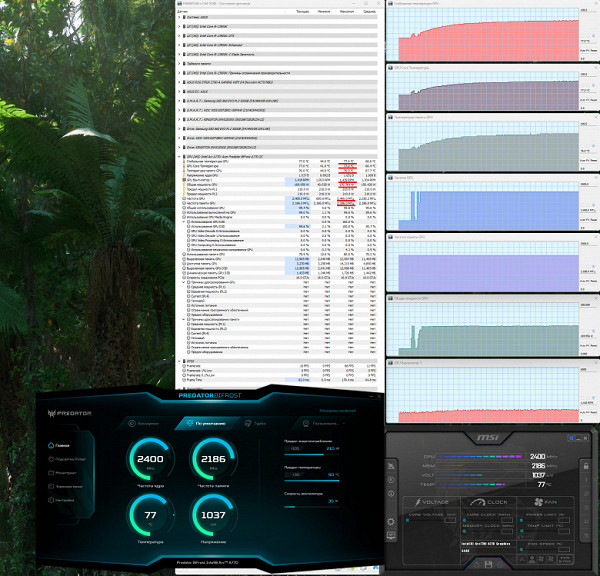
In the default operating mode, after a two-hour run under load, the maximum core temperature did not exceed 77 degrees Celsius (also the highest point reached 77 ° C), and the temperature of the memory chips was 76 degrees Celsius, which is considered a normal result. The card's power consumption reached 171 W.
We recorded and sped up an eight-minute heating test by 50 times.
The maximum heating was observed in the central part of the PCB, as well as near the PCIe connector.
In the Turbo operating mode (selected through the Predator Bifrost application), after a two-hour run under load, practically nothing changed: the maximum core temperature, the hottest point and the temperature of the memory chips did not exceed 76 degrees Celsius. The card's power consumption reached 173 W.
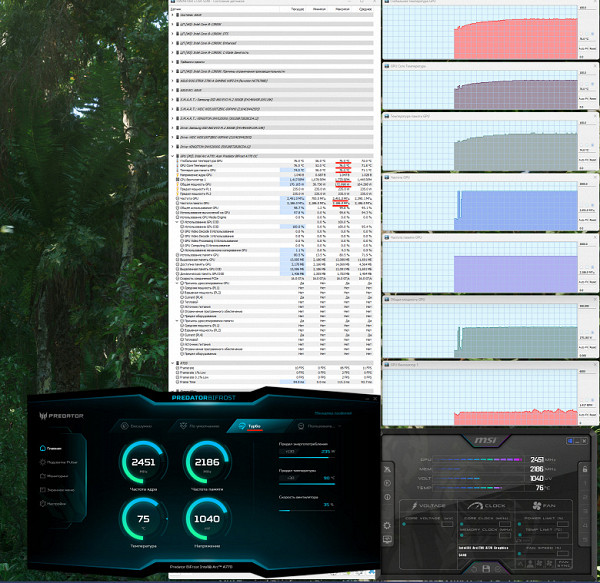
During manual overclocking, the heating parameters also changed very little.
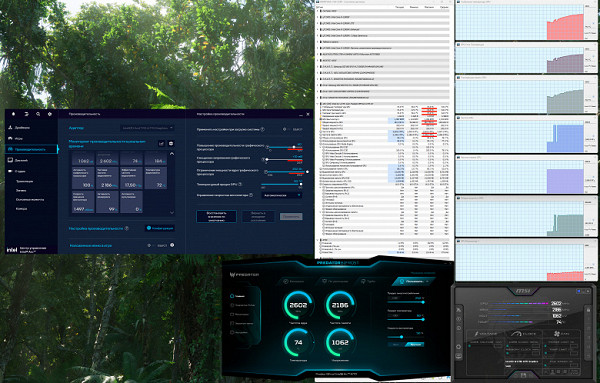
Noise
The noise measurement technique assumes that the room is soundproofed and sound-absorbing, with minimal reverberation. The system unit in which the video card noise is measured does not have its own fans and is not a source of mechanical noise. The background noise level is 18 dBA, which reflects the overall noise level in the room, including the sound level meter.
Measurements are taken at a distance of 50 cm from the video card at the level of the cooling system. Here are the measurement modes:
- 2D Idle Mode: The system is loaded with an Internet browser with iXBT.com, a Microsoft Word window and several Internet communicators. The temperature of the video card does not exceed 37 °C, the fans operate at variable speeds from 1060 to 1260 rpm, the noise level reaches 26 dBA, which corresponds to the “quiet” category.
- 2D Movie Mode: Uses SmoothVideo Project (SVP) for hardware decoding with intermediate frame insertion. The noise level remains at idle levels in 2D.
- 3D mode with maximum load: Uses the FurMark test to maximum load the video card. Temperatures reach 77/77/76 °C (core/hot spot/memory), fans accelerate to 1440 rpm, and noise levels increase to 34 dBA. This meets the «clearly audible» category, but does not yet reach the «loud» level.
The noise spectrogram shows a flat pattern with one pronounced floating peak around 320 Hz. There are no subjectively noticeable irritating sounds.
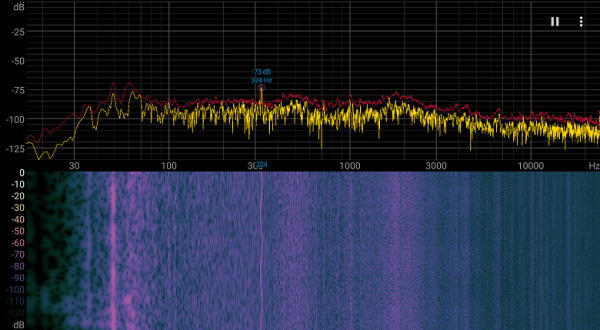
Do not forget that the heat generated by the card partially remains inside the system unit, so it is advisable to use a case with good ventilation.
Backlight
The card has three lighting zones: the main 100mm axial fan, the area behind the centrifugal fan and the logo on the top end.
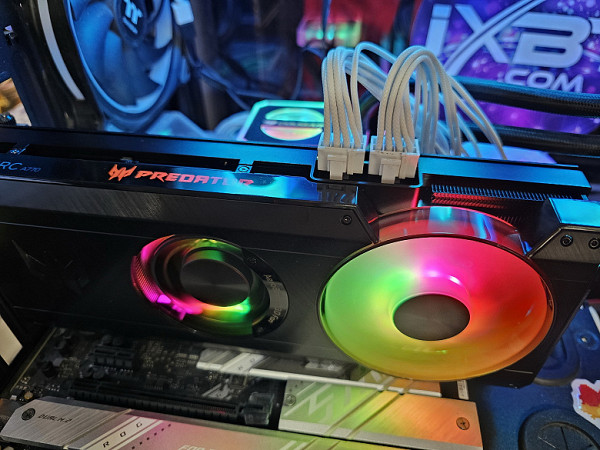
The backlight is controlled through the Predator Bifrost program, which allows you to synchronize or configure the three backlight zones separately, as well as turn them off completely.
There are many backlight scenarios available in the program, but there is no way to synchronize the backlight with motherboards, which is a significant limitation.
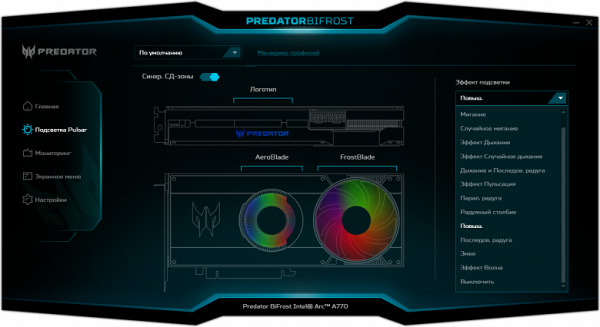
A strip of LEDs located behind the centrifugal fan in the center of the card creates an interesting 3D visual effect (since this fan is always spinning).
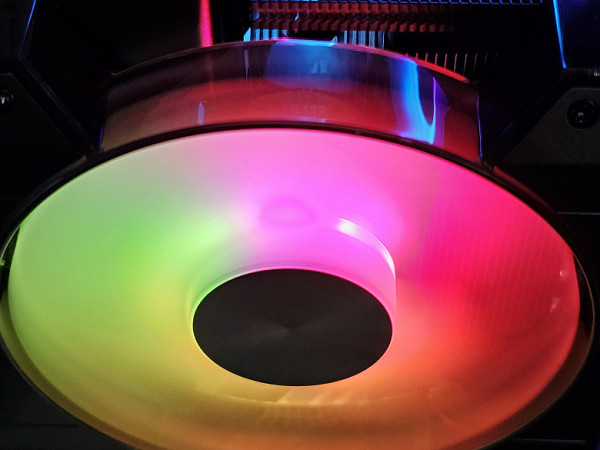
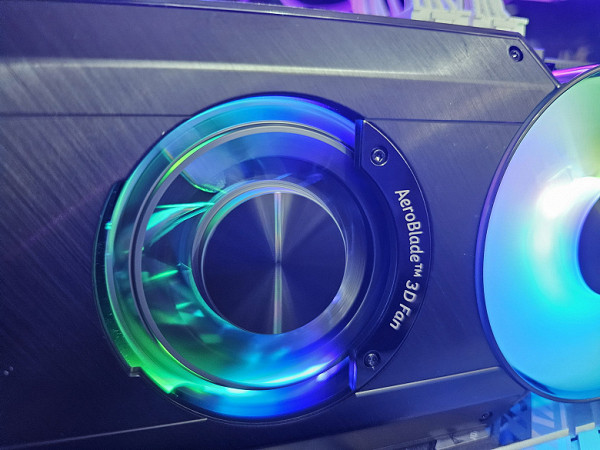
Delivery and packaging
In addition to the card itself, the package includes a short user manual and a USB flash drive with software.
conclusions
Acer Predator Bifrost Intel Arc A770 OC (16 GB) is a mid-budget video card that supports all modern 3D technologies and is equipped with 16 GB of memory, which provides sufficient resources even for flagship solutions. It is designed for gaming in 1080p (Full HD) and 1440p (2.5K) resolutions. The card is compact (270x120 mm) and occupies only 2 slots in the system unit, requiring an effective cooling system due to consumption of up to 171-173 W.
However, despite its relatively compact size, the cooler does not always cope perfectly with the task: temperatures are quite high, the fan noise is distinct, and they do not stop when idle. The effectiveness of the cooling system with two different types of fans remains debatable, and we have not seen evidence of its high efficiency.
The card is equipped with a standard set of video outputs: 3 DP 2.0 ports and 1 HDMI 2.1 port. For power supply, two 8-pin PCIe 2.0 connectors are used.
Manual overclocking options for Intel Arc cards are limited by changing the GPU frequency, but with the right settings you can achieve significant performance improvements.
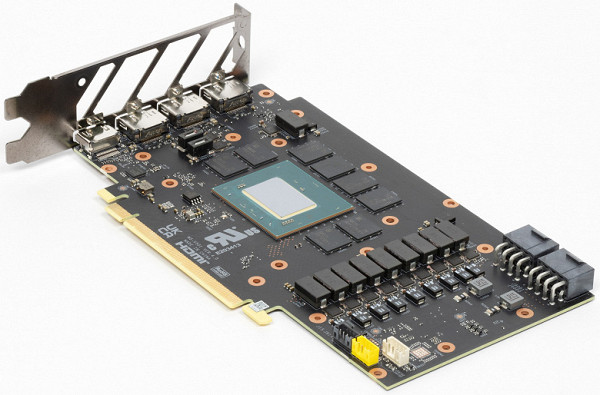
It is worth noting the unique backlighting of the card, the presence of numerous scenarios for controlling it through a special program, as well as the ability to completely turn off the backlight.
The manufacturer provides a 3-year warranty for this video card.
We emphasize once again that the Arc A770 is excellent for games without ray tracing at 1080p (Full HD) and 1440p (2.5K) resolutions at maximum graphics settings. To achieve good performance when ray tracing is enabled at both resolutions, it is recommended to use FSR and XeSS technologies.
And it is important to mention that for full operation of Intel Arc-based video cards, a relatively modern PC with support for Resizable BAR technology is required. This includes AMD 500 generation chipsets (X570/B550/A520 and newer) and Intel 500 generation chipsets (Z590/B560/H510 and newer). As such, Arc cards cannot simply be installed into older gaming PCs without a platform update.
It is also worth noting support for the HDMI 2.1 standard, which allows you to output 4K images at 120 FPS or even 8K using a single cable, as well as support for hardware video decoding in AV1 format. In addition, the cards support the DP 2.0 standard.

